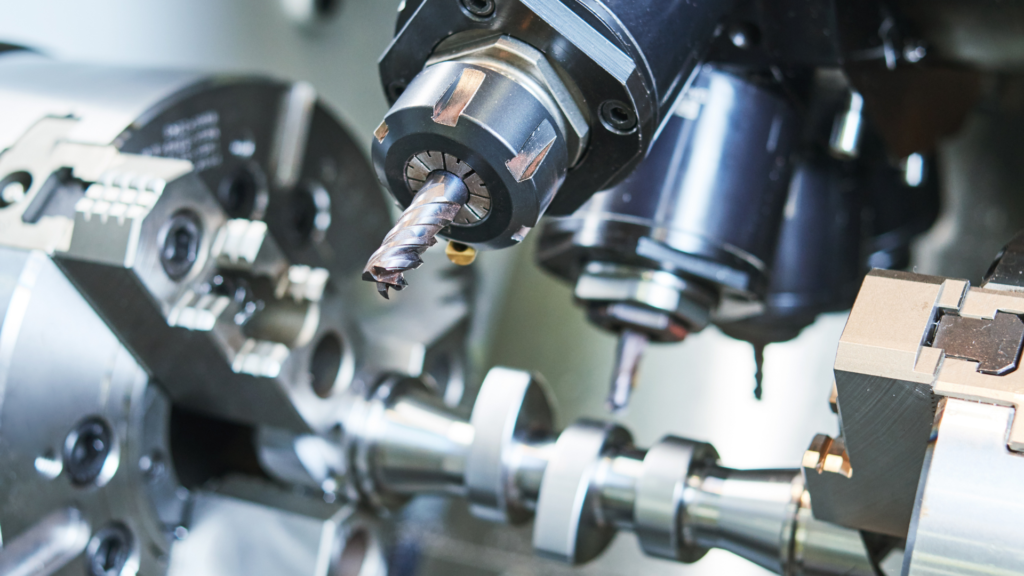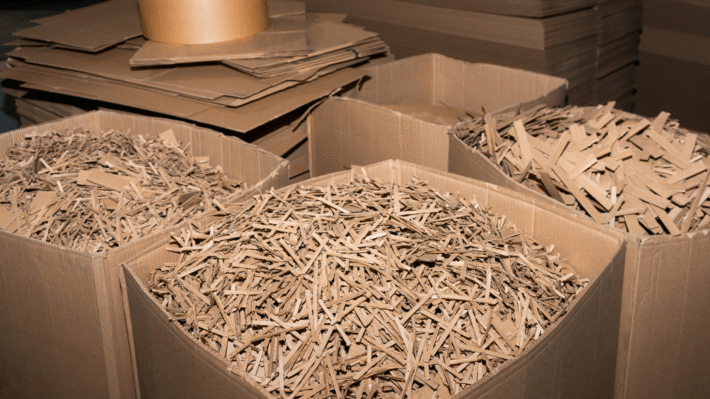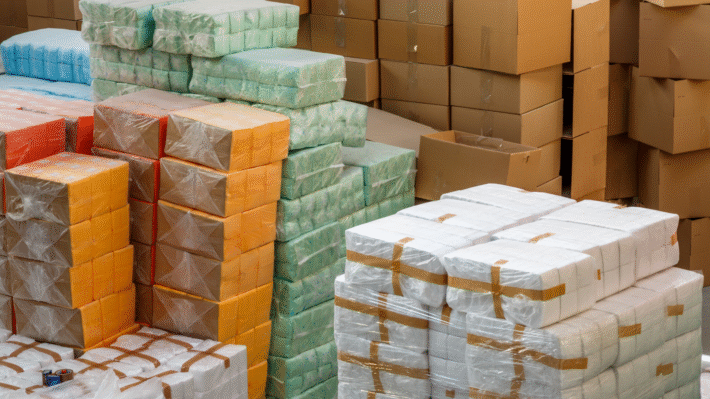Turning Precision Machining Waste into Gold: Essential Steps for Metal Scrap Recovery

Hello, caped crusaders of the precision machining world! Are you eager to harness hidden treasures in your machining waste and embolden a new era of metal scrap recovery? Well, Fabricate no further! We’re about to dive into the exciting world of Creating circularity in precision machining waste supply chain – uncovering never-before-revealed secrets of recovering and reusing high-value metal scraps. Sparking a revolution, we’re going to address problems from high waste generation, disposal issues, and raw material scarcity, to the grand goal of achieving ultimate waste circularity. Stay tuned as we work our way from waste reduction and recovery techniques to advanced technology innovations and futuristic circularity principles. In the end, you’ll never see your metal scraps the same way again. It’s time for the great reveal, folks! So, strap on your safety goggles and let’s get started. Here’s to an adventure in scrap and sustainability! 🎉
Understanding the Need for Circularity in Precision Machining
Imagine you’re walking around a precision machining shop. You’ll see sparks flying, hear the hum of powerful machines, and smell coolant and metal dust in the air. It’s a fascinating place, but behind this dance of manufacture and creation, there’s an immense problem – mounting piles of waste.
The Problem with Waste
Environmental Impacts
When we think of waste, we often envision discarded products or raw materials. But in precision machining, the waste is hidden in plain sight. “Swarf”, a term for the tiny metal fragments produced during machining, accumulates hour upon hour, day after day. It’s not just about the physical trash piling up, either. These fragments, often mixed with dangerous coolants and lubricants, pose a significant environmental hazard. They pollute our water systems, toxify our soils, and endanger wildlife when not properly managed.
Economic Costs
Now, consider the financial implications. Throwing away these scraps is like dumping money into the trash. Precious metals such as tungsten, used in high-quality cutting tools, are literally being wasted. Plus, the cost of disposing of this waste correctly isn’t cheap either. And remember, the costs of not disposing of it correctly can be astronomical – both financially due to potential fines and morally due to the environmental impact.
Disposal Issues
Disposal of metal waste is challenging, to say the least. Traditional landfilling isn’t an option due to the environmental risks. Certain materials may need special facilities for safe disposal. And getting the waste to these facilities? That’s another set of logistics and costs to worry about.
Scarcity of Raw Materials
We can’t ignore the elephant in the room – our planet’s resources aren’t unlimited. Many metals used in precision machining are becoming scarcer, and mining them is often harmful to the environment. So, we’re in quite a predicament, aren’t we? It’s clear we need to prevent this waste. But more than that, we need to find a way to reuse the valuable materials we’ve already extracted. That’s where circularity comes in. The concept of maintaining continuous use of resources within our economic system, thus avoiding waste, is the future of precision machining.
Stay tuned, because in the next section, we’ll dig deep into the principles of circularity in precision machining!
Principles of Circularity in Precision Machining
In the scopes of precision machining, the circularity principles we shout out follow these three magical words: Reduce, Reuse, Recycle.
Reduce, Reuse, Recycle
To fabricate a posh term as the “Circular Economy”, just focus on these basic yet proactive strategies. I mean, they are as easy as playing tic-tac-toe.
When I say ‘Reduce’, the main idea is to trim down the quantity of waste produced right from your machining processes. Take a good hard look at your operations, make them efficient, let’s stop making stuff that’s destined for the scrap heap. Hard pill to swallow? Probably. But trust me my friend, you’ll be grateful in the long run.
Next on the agenda, we have ‘Reuse’. This simply means giving a second life to those metal scraps that would otherwise adorn your bins. For instance, swarf can be collected, compacted, and turned into shiny new products. Now that sounds pretty cool, doesn’t it?
Finally, let’s ‘Recycle’. If you can’t reduce or reuse, it’s time to recycle. Turn those waste materials into something useful. Just the thought of reusing high-value metals like copper, brass, or the ever dear silver… pretty impressive, right?
Closed-loop Systems
Creating a circularity in precision machining ain’t much of a monster task, especially when we’ve got closed-loop systems on our side. I’m talking about a system so ingenious that your waste becomes your raw material. It’s like your own personal pocket-dimension, where what goes out, comes back in.
Meanwhile, these systems not only ensure the efficient use of resources but also cut down the chucking of waste into the environment. Now that’s how we make the green planet greener.
Minimizing Waste
Optimizing Cutting Processes
You’ve got to admit, factories filled with towering machines doing their slicing and cutting gig can be quite a sight. These machines, folks, hold the reins to minimizing waste.
By optimizing cutting processes, you can prevent wastage right at its root. That, my friend, is how you pull off a masterstroke in waste minimization.
Extending Tool Life
Machines are like family, the better you take care of them, the longer they’ll be around. The same rule applies to your machining tools. By extending their lives, you can drop down your waste to remarkable lows while saving heap loads on those new set of tools.
So there you have it. Circularity in precision machining might seem tricky, but with these principles, you can transform your waste into gold (metaphorically, of course). The choice, folks, is yours.
Types of Waste in Precision Machining
In the precision machining world, it’s like running a treasure mine. Here’s why: we generate heaps of waste daily in different forms, most of which are high-value metal scraps waiting to take a second trip through the production cycle. Let’s take a deep dive into the types of waste we encounter in precision machining.
High-Value Metal Scraps
High-value metal scraps are the crème de la crème of machining waste. These are chunks of precious metal cuttings like gold, silver, platinum and that good old copper, all lurking within the swarf, just begging to be recovered. Also mixed in the rubble, we’ve got zirconium, titanium, carbide and other high-value metals. Waste? Nah! This is cash in disguise.
Swarf and Turnings
Next up, the big bad wolves of the machining waste world – the swarf and turnings. Now, if you think this is just heaps of metal shavings and turnings lying around, you’ve got another thing coming. Packed in those mountains of metals are pools of reusable materials. Let’s not forget, our swarf and turnings are from high-quality precision equipment. So, each shaving is a potential goldmine. But, they need a little bit of refining and they’ll be ready to get back in the game again.
Coolants and Lubricants
Ah, you’ve got to love the coolants and lubricants. They perform the crucial job of cooling and lubricating our machines during operation. But over time, they turn into waste, and most folks turn their noses up at this point. But not us! You see, these fluids can be filtered, treated and rebirthed into their former cooling, lubricating glory.
Dust, Fumes, and Broken Tools
Lastly, we’ve got the dust, fumes, and broken tools. These are the smaller chips, tiny dust particles, and fumes that escape during machining. Not forgetting those broken tools, which after a lifetime of shaping, cutting, and drilling, end up worn out and useless, chucked away in some rusty corner. Well, guess what? Even these little fellows can be recycled and reused.
Now, it might seem like an uphill battle. The sorting, the separating, the recycling – it’s a monstrous task indeed. But remember, every bit of waste recovered is money saved and a nod to mother nature. So why not embrace it? Welcome to the circularity in precision machining! Stay tuned for the next segment; we’ve got a treat on the recovery techniques of these metal scraps.
Challenges in Creating Circularity
When it comes to creating a circular supply chain for precision machining waste, we’re facing some significant hurdles. But like my old gym teacher used to say, “A hurdle is just a stepping stone that got a bit cocky.”
Separation and Sorting
First off, let’s talk about separation and sorting. See, not all waste is created equal — we’ve got swarf, turnings, coolant, and even broken tools. These booger bears need to be separated and sorted before being processed for reuse or recycling. Technology like magnetic and eddy current separation helps, but this is a process that will get your hands dirty. Not literally, mind you, but it’s not a walk in the park.
Contamination Issues
Next up, contamination issues. In an ideal world, we would have clean, uncontaminated waste. But, reality checks in, and we have waste mixed with lubricants, dust, and other unwelcome guests. This makes the recycling process more complex and, if not adequately addressed, can produce substandard results.
Infrastructure Needs
I’ll let you in on a little secret — turning waste into reusable materials isn’t an operation you can slap together in your backyard. It requires a well-built infrastructure that can handle the myriad of operations from collection, sorting, to recycling. Unfortunately, such an infrastructure often requires a considerable upfront investment. But hey, remember, it’s not a spend; it’s an investment!
Economic Viability
And last but not least, the elephant in the room, economic viability. Most businesses are out to make a profit, and if the cost of running a circular supply chain outweighs the savings and benefits, well then, we’ve got a problem. Convincing the accountants might be trickier than separating the swarf from the turnings. But with the right planning and strategy, it’s not only possible but extremely lucrative!
So, considering these challenges, does it mean we’re up a creek? Heck no! As with any journey worth taking, there will be obstacles. The secret sauce lies in how we tackle them. Let’s ring the bell, put on our gloves, and take ’em head-on, folks!
Recovery Techniques for Metal Scraps
Alright, listen up good folks! We’re about to dive into the nitty-gritty of transforming your machining waste into pure gold. Okay, not literally. But hey, value is value, metal is metal, and wasted opportunity? Well, that just doesn’t sit right with us. Let’s shake things up with three winning strategies.
Hydrometallurgical and Pyrometallurgical Processes
These two amigos might sound like something out of a sci-fi movie, but trust me, they’re right here in the real world, saving the day for our precious metal scraps. There’s the hydrometallurgical process, a fancy term for extracting metals from ores using liquid solutions. Don’t let it fool you; this isn’t your grandma’s tea party. Picture more of a specialized spa treatment for metals, with all the refreshing perks!
Then, our second knight in shining armor – the pyrometallurgical process – heats things up a notch. Our metal scraps go through a high-temperature treatment, melting down the contaminants and purifying the valuable bits. Now who’s enjoying a hot sauna experience?
Direct Recycling and Tool Refurbishment
Feeling frugal? Then you’re going to love direct recycling. No mess, no fuss – just straight up reusing high-value metal scraps right where they belong. And speaking of giving sheer respect to your old tools, we’ve got tool refurbishment. Hammering out the kinks, smoothing down the edges, and voila! You’ve got yourself a nearly-zero waste solution.
Advanced Automated Sorting
Aah, my favorite plot twist: automation. We live in an era where robots can lend a helping hand, or in our case, an extremely precise, lightning-fast, metal-sorting hand! Especially when armed with LIBS and AI-powered identification. LIBS, or Laser Induced Breakdown Spectroscopy, zaps our metal scraps with a laser and measures the sparks flying off. The result? A swift identification of each and every scrap’s metal type.
Feeling on top of the world with an army of robotic sorters? You’re not alone. Welcome to the future of metal scrap recovery, where precision, efficiency, and a whole lot of fun reign supreme.
Let’s get those rusted, dusty metal scraps shining and back in where they belong. And remember, it’s not just about the money. It’s about giving Mother Earth a helping hand, too. So, are you ready to jump aboard the recovery express?
Strategies for a Circular Supply Chain
When it comes to creating a circular supply chain in precision machining, there are a handful of key strategies that come into play. Let’s break them down…
On-site Waste Management
First off, on-site waste management. It’s the first line of defense in waste minimization. See, every machining process generates waste – there’s no escaping that! So, we need to have systems in place on-site to manage this waste. It’s easy to let your eyes glaze over and just see this waste as an unavoidable part of the process, but what if I told you this waste could be an untapped treasure trove?
By implementing effective on-site waste management strategies, high-value metal scraps can be recovered – making the proverbial trash into treasure. And not just any treasure, but one that has huge potential to drive cost savings and sustainability!
Partnerships with Recyclers
Next, we arrive at partnerships with recyclers. Machining outfits and metallurgy firms need to join hands with professional metal recyclers. When you can’t handle all the waste in-house, these recyclers act as crucial links in the circular supply chain. They use specialized tech for separating, sorting, and recovering high-value metals from waste.
In a world where raw materials are scarce and environmental stakes are high, such partnerships fuel a circular economy. Together, precision machining and recycling businesses can unlock value from waste and convert it into a renewable resource of material.
Circular Certifications and EPR
Lastly, pursing circular certifications and engaging in Extended Producer Responsibility (EPR) schemes can grease the wheels of circularity. Okay, I get it – certifications may sound like just more red tape. But think about this – such certifications signal to the world that your company is committed to a green, sustainable future. And trust me, that’s a badge of honor worth wearing!
Meanwhile, EPR means producers take responsibility for treating or disposing of post-consumer products. Some regulation, perhaps? Yup. But you see, it’s also about taking ownership of the lifecycle of products, and that propels the circular supply chain in the right direction.
So, in conclusion, the route to a circular supply chain in precision machining isn’t a walk in the park. It requires commitment, partnerships and a shift in perspective. It’s about seeing waste not as an end, but as a valuable new beginning. And that, my friends, is where we can strike gold!
Role of Technology and Innovation
In today’s cutting-edge industrial landscape, innovation is not just a buzzword; it’s a necessity. Nowhere is that more evident than in the field of precision machining. Here, technology is rapidly evolving to create more effective ways of recovering and reusing high-value metal scraps, making the waste supply chain more circular and sustainable.
AI and Machine Learning
One of the key players in this innovative game is artificial intelligence (AI) and machine learning. These technologies have the potential to transform the waste supply chain, making it smarter, more efficient, and more circular.
AI can help optimize the cutting processes, reducing waste while extending tool life. This leads to both environmental and economic benefits, as less material is wasted and tools last longer, reducing costs. Think of it as a brainy ally, working around the clock to make your operations better and leaner.
Machine learning, a branch of AI, can help in identifying and sorting different types of metal scraps – say bye-bye to heaps of unsorted waste! It can analyze patterns and make predictions, turning heaps of scattered data into useful, actionable insights.
IoT in Waste Tracking
Next up is the Internet of Things (IoT). In simple terms, it’s a network of physical objects connected to the internet. In precision machining, these could be the machines themselves, tools, waste bins – you name it.
Here’s a real-world scenario: IoT sensors attached to machines or tools can monitor their condition and performance in real-time, warning you when a tool is about to break or produce more waste than it should – kind of like a tech-driven guardian angel for your operations!
IoT can also track the wastes produced – where they are produced, where they go, and how they can be recovered and reused – a fantastic tool to have for a circular supply chain!
Blockchain for Traceability
Last but not least, let’s talk about blockchain. Known as the backbone technology behind Bitcoin, blockchain provides a decentralized and transparent way of recording transactions, or in our case, tracking the journey of wastes.
Using blockchain, every stage of the waste’s life cycle can be recorded and verified, from its production to recovery and reuse. This traceability enhances the transparency of the waste supply chain, helps in auditing and compliance, and increases the trust of stakeholders.
In sum, technology and innovation are paving the way for creating a more circular and sustainable precision machining waste supply chain. By harnessing the power of AI, machine learning, IoT, and blockchain, we can recover more high-value metal scraps, minimize waste, and take a leap towards a more sustainable and efficient machining industry.
Economic and Regulatory Aspects
Diving headfirst into the world of circularity in precision machining, we can’t overlook the immediate and long-term financial implications. But worry not, it’s not all gloomy. There are opportunities for cost savings and revenue streams cropping up in every corner!
Cost Savings and Revenue Streams
A wise man once said, “A penny saved is a penny earned”. The same goes for materials saved in the precision machining industry. Reducing waste, reusing high-value metal scraps, and recycling other materials not only ensures that we’re making the planet a healthier place, but also saves a bundle in raw material expenditure. But the benefits don’t stop at cost savings. By establishing circular systems and clever recovery techniques, your precision machining operations become a veritable gold mine of high-value metal scraps. These materials can be a significant new source of revenue when sold back into the supply chain. Economically viable? Absolutely!
EPR Programs and Tax Incentives
Now, let’s chat about Extended Producer Responsibility (EPR) programs. These are policy measures designed to promote the integration of environmental costs associated with goods throughout their life cycles into market prices. In layman’s terms, EPR programs can be your ticket to further economic benefits. Promoting recovery and recycling, these programs can often result in significant cost savings, and sometimes offer valuable tax incentives. Yes, you heard it right! Saving the environment might just be your ticket to a lighter tax burden at the end of the year.
Industry Standards and Certifications
And it doesn’t end there! By embracing circularity, you’re not only aligning with a global trend, but you’re also aligning with industry standards and certifications that champion sustainable practices. So why is this good news? Well, many clients and consumers today are vigilant about doing business with companies that demonstrate environmental responsibility. By meeting these industry standards and earning certifications, you not only boost your company’s reputation but also open doors to markets and clients you previously wouldn’t have access to.
That’s what circularity in precision machining brings to the table: a healthier planet, happier wallets, and a heftier client book. Now, isn’t that a win-win scenario worth considering?
Future Outlook for Circularity in Machining
Friends, it’s a brave new world out there, and precision machining is no exception. Circularity in machining, once the stuff of pipe dreams, is becoming reality. Now, let’s take a peek into the future of this exciting field.
Innovative Materials and Techniques
With a twinkle in our eye, we gaze into tomorrow’s precision machining landscape nourished by innovative materials and techniques. Picture it! Bio-based extraction techniques recovering high-value metals, substituting harmful chemical processes. Imagine, nanotechnology enabling recovery of precious metals at a granular level, minimizing waste like we never dreamt possible.
Thanks to unprecedented advancements in technology, we’re also on the brink of employing Artificial Intelligence for predictive management. This means optimally using materials and tools, foreseeing waste generation, and taking action before the machines start buzzing. That’s right, we are heading towards a future where wastage in precision machining would become as old-fashioned as corded telephones!
Zero-Waste Initiatives
Now here comes the part where we get really lofty. We’re talking a future packed with zero-waste initiatives. Are you familiar with the concept of ‘Regenerative Design’? A design that rejuvenates itself, its environment, and everything around it. Envision precision machining systems designed in such a way that they recreate themselves, utilizing every ounce of waste they generate.
Imagine a world where we don’t even utter the word “scrap” because there’s none of it left sobering in some corner. Think of precision machining units as mini-ecosystems, self-contained and self-sustaining. That’s the promise of zero-waste initiatives.
Digital Twin and Lifecycle Tracking
Last but not the least, let’s muse over the use of digital twins and lifecycle tracking. We’re talking about real-time digital counterparts of physical systems that can help foresee issues, streamline operations, and completely revolutionize lifecycle management. A future where one can track the journey of every metal piece from the production line, through its useful life, until it finds a new home in another product. This ain’t science fiction, folks. It’s the imminent future of precision machining!
In this future orbit of possibilities, many challenges, of course, remain to be tackled including technical, economic, regulatory, and even cultural barriers. Yet with the collective willpower and continued innovation, the future of circularity in precision machining is closer than we EVER dared to dream. It’s a thrilling time, and I can’t wait to navigate this journey with you, folks. Let’s roll up our sleeves and create that tomorrow, today!



